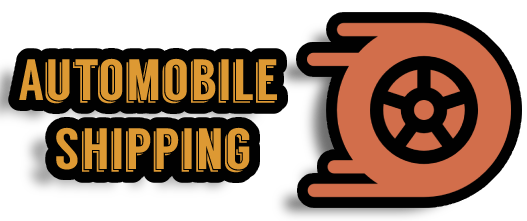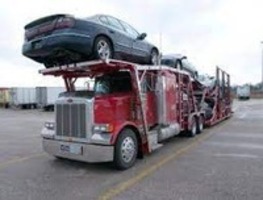Steering your way across the Canadian border with a moving truck an adventure filled with excitement and anticipation. Whether relocating to the Great White North or embarking on a new business venture, it’s essential to ensure that your journey is seamless and stress-free. In this blog post, we’ll provide important tips and guidelines on what you need to know before crossing the Canadian border with your trusty moving truck. So fasten your seatbelts and get ready for a smooth ride through customs!
What does a truck need to cross the Canadian border?
When it comes to crossing the Canadian border with a moving truck, there are a few essential requirements that you need to keep in mind. First and foremost, your truck must have proper documentation. This includes valid registration papers, insurance proof, and necessary permits or licenses.
Additionally, it’s essential to ensure that your moving truck meets specific safety standards. This means checking that all lights are working properly, tires are in good condition and inflated correctly, and brakes function as they should. It’s also recommended to have an emergency kit on hand in case of any unforeseen situations.
Another crucial aspect is declaring any items or goods you bring into Canada. Customs officials will want to know what is being transported across the border and may require additional paperwork for particular items. It’s always best to be transparent about the contents of your moving truck to avoid any potential issues during the inspection process.
Make sure you have identification readily available for yourself and anyone else who will be driving the truck. Passports or other government-issued identification cards should be easily accessible throughout your journey.
What needs to be declared at the Canadian border?
When crossing the Canadian border with a moving truck, knowing what items need to be declared is essential. Declaring certain goods ensures you follow the Canada Border Services Agency (CBSA) regulations and requirements. This helps maintain border security and facilitates a smooth crossing.
So, what needs to be declared at the Canadian border? The answer is simple: anything that exceeds your personal exemption limits or falls under restricted or prohibited categories. Personal exemptions vary based on factors such as length of absence from Canada and mode of transportation used.
Remember that failure to declare these goods can result in penalties or seizure by CBSA officers. Being transparent about your belongings will help expedite the process and ensure compliance with Canadian customs regulations.
What is the best time to cross the Canadian border?
Best Time to Cross the Canadian Border
Planning a move across the Canadian border can be an exciting but also daunting task. One crucial aspect to consider is timing – choosing the best time to cross the border with your moving truck can significantly improve efficiency and convenience.
Avoiding peak travel times such as weekends, holidays, and long weekends is a good idea as these attract more travelers.
Early mornings or late evenings offer quieter periods at the border crossings. Additionally, weekdays outside regular rush hours might provide less traffic congestion and shorter wait times.
It’s worth noting that some crossing points may experience higher volumes during specific seasons or events. For example, summer tends to increase tourist traffic, so planning your move during shoulder seasons like spring or fall could help minimize potential delays.
It’s crucial to thoroughly research your chosen crossing point(s) and monitor current conditions before embarking on your journey. Flexibility in scheduling can go a long way in ensuring a smoother transition across the Canadian border with your moving truck.
Is crossing the border to Canada hard?
Crossing the border to Canada with a moving truck may seem daunting, but proper planning and preparation can be a smooth and seamless experience. By ensuring that you have all the necessary documentation, including your passport, relevant permits, and vehicle paperwork, you well-equipped to navigate the customs process.
Remember to declare any items that must displayed at the Canadian border and honest about your intentions for entering the country. Timing your crossing strategically by avoiding peak hours and busy periods helps streamline the process.
So don’t let concerns about crossing the border deter you from making this exciting move. With careful planning and attention to detail, you’ll soon find yourself settling into your new home in Canada hassle-free!
Pros:
Using a moving truck to cross the Canadian border allows for convenient transportation of your belongings, eliminating the need for multiple trips or complicated logistics.
By using a moving truck instead of hiring a professional moving company, you can save money on labor and transportation fees.
With a moving truck, you have more control over how your belongings are pack and transported, giving you peace of mind during the move.
When crossing the Canadian border with a moving truck, you have the freedom to choose your own route and schedule according to your needs.
A moving truck can accommodate both residential and commercial moves, making it suitable for different types of relocation scenarios.
Cons:
Crossing the Canadian border with a moving truck can be time-consuming due to various customs processes and paperwork.
Depending on the size of the truck rented, there may be limited storage space available for all of your belongings.
If you are not familiar with driving in Canada or using large vehicles, crossing the border with a moving truck may be challenging and stressful.
FAQs:
1. What documentation do I need to cross the Canadian border with a moving truck?
Answer: You will need two forms of valid identification (one with a photo) such as a passport, driver’s license, or birth certificate, and a valid vehicle registration for your moving truck.
2. Do I need any special permits to cross the border with a moving truck?
Answer: Yes, you may need a temporary importation permit if you are bringing a large vehicle or commercial goods across the border.
3. Are there restrictions on what items I can bring into Canada when crossing the border with a moving truck?
Answer: Yes, there are restrictions on what items you can bring into Canada from the US. You should consult the Canadian Border Services Agency before crossing the border with a moving truck.
4. How long can I stay in Canada when crossing the border with a moving truck?
Answer: You can remain in Canada for up to 180 days without obtaining a visitor visa. However, if you plan to stay longer than 180 days, you will need to apply for a visitor visa.
5. Will I be subject to customs duties when crossing the border with a moving truck?
Answer: Yes, you may be subject to customs duties depending on the value of the goods you are bringing into Canada. All items declared to customs upon entering Canada.
Features:
1. Proper Documentation: Ensure you have all the necessary documentation required for crossing the border, including passports, vehicle registration and insurance.
2. Vehicle Inspection: The truck inspected by Canadian border services upon arrival at the border.
3. Declaration: Declare any goods you are bringing into Canada, including items that may be subject to duty.
4. Payment of Duties/Taxes: Pay any applicable duties or taxes on goods you are bringing into Canada.
5. Permit Requirement: Be aware of any permits or restrictions that may needed for certain items or for certain locations.
6. Length of Stay: Know the maximum length of stay you are allowed in Canada with the truck before you need to cross back into the U.S.
7. Vehicle Exit: Ensure you have the necessary documents to take the truck out of Canada when you are ready to leave.
8. Moving Truck Insurance: Make sure you have purchased the necessary insurance coverage for the truck while you are in Canada.

